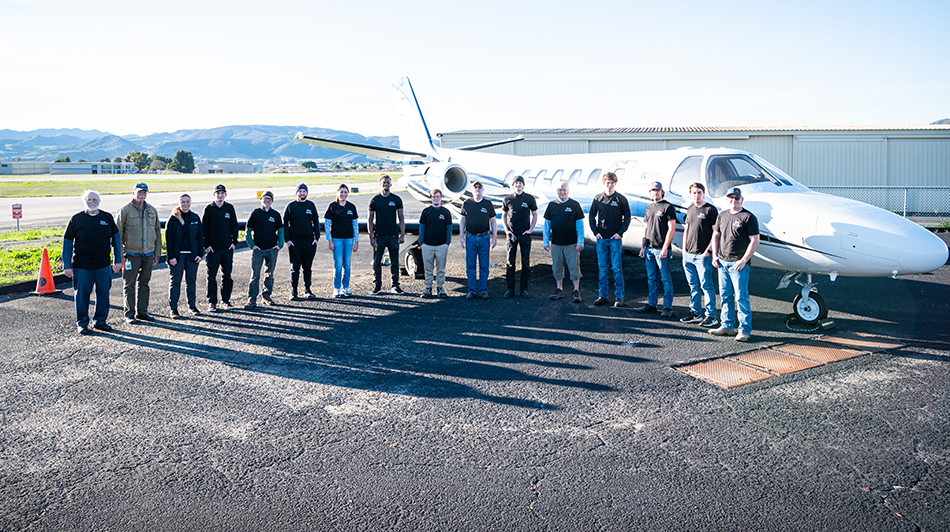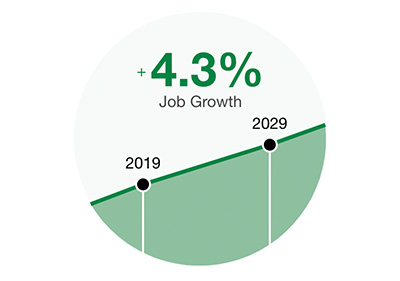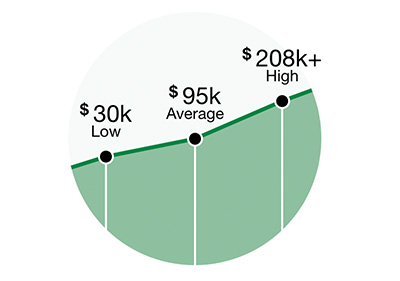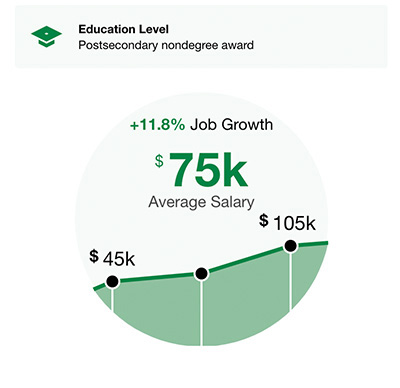About the Aviation Maintenance Technology Program
The critical current & future need for Licensed Aircraft Technicians
The U.S. in general, and the Central Coast in particular, have a critical shortage and a need for aerospace technicians with Airframe & Powerplant (A&P) licenses.
The demand for A&P mechanics is very high and expected to continue to increase for the foreseeable future. In Boeing’s recent outlook report, it’s estimated there will be a shortage of 193,000 A&P Mechanics in North America and 769,000 mechanics worldwide by 2038!
The shortage will be exacerbated by the development of unmanned systems (drones) to be used for urban mobility, package delivery, and other commercial operations. As certified aircraft that serve the general public, these airborne systems will be required to be maintained by FAA licensed and trained personnel. The demand for unmanned systems (drones) will be spread evenly nationwide and will not be limited to large metropolitan areas.
Additionally, the scheduled airlines employ approximately 50,000 mechanics with another 85,000 A&P licensed mechanics employed in general aviation for air taxi and fixed base operators, flight training schools, supplemental airlines, corporations owning fleets of aircraft, and aircraft manufacturers. Mechanics and technicians are also employed at 4,000 FAA certified repair stations across the U.S. Another large employer, the U.S. Government employs approximately 100,000 civilian aircraft mechanics and avionics technicians to work on military aircraft at installations in the U.S. and overseas.
Specialized Work
A&P certification opens the door for work in the growing field of unmanned aircraft that will require FAA-certified technicians. Additional opportunities outside of aviation and space industries include the maintenance of ship engines, large scale agricultural systems, wind turbines, auto racing, and the industrial application of hydraulic systems e.g. elevators, manufacturing equipment, amusement parks, etc.
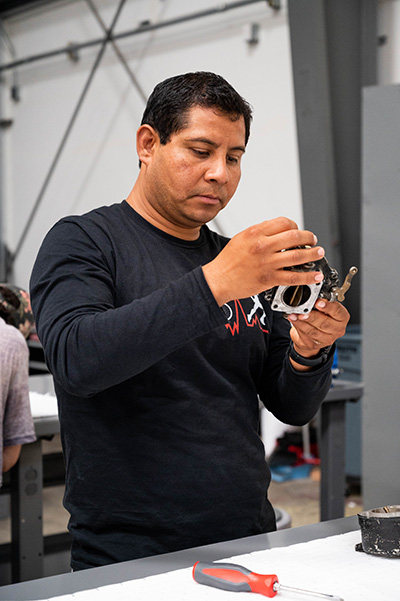 Can I Do This?
Can I Do This?
What Do Aircraft Technicians Actually Do?
Aviation maintenance technicians inspect and troubleshoot aircraft equipment on a regular basis, looking for parts that may need to be repaired or replaced. Some of the components you would work on include avionics, brakes, wheels, electrical systems, and flight control surfaces.
During inspections, aviation maintenance technicians are required to use diagnostic procedures approved by the Federal Aviation Administration (FAA). They complete inspections, perform scheduled maintenance, and make any necessary repairs and upgrades according to FAA regulations.
What qualities do I need?
Attention-to-Detail
Aviation mechanics and technicians need to follow written instructions to adjust airplane parts to exact specifications. For example, they often use precision tools to tighten wheel bolts to an exact tension.
Dexterity
Aviation mechanics and technicians must possess dexterity to coordinate the movement of their fingers and hands in order to grasp, manipulate or assemble parts.
Observational Skills
Aviation mechanics and technicians must recognize engine noises, read gauges and collect other information to determine whether an aircraft’s systems are working properly.
Troubleshooting Skills
Aviation mechanics and technicians diagnose complex problems, and they need to evaluate options to correct those problems.
Earning Potential
Education levels are meant to represent what is typical for entry into the career, based on data from the U.S. Bureau of Labor Statistics.
